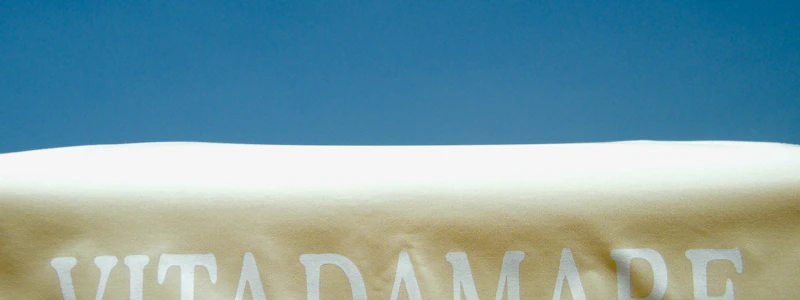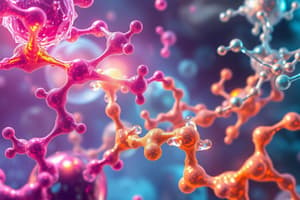Podcast
Questions and Answers
What is the main reason students studying biology need to have some knowledge of chemistry?
What is the main reason students studying biology need to have some knowledge of chemistry?
- To know the chemical composition of cells (correct)
- To master chemical equations
- To understand the structure of atoms
- To learn about the periodic table
Why does sweating cool the skin according to the text?
Why does sweating cool the skin according to the text?
- Due to the release of heat energy during sweating
- As a response to increased blood pH levels
- As a result of the strong forces of attraction between water molecules (correct)
- Because of the weak forces of attraction between water molecules
How does the bicarbonate buffering system help in maintaining blood pH?
How does the bicarbonate buffering system help in maintaining blood pH?
- By neutralizing acidic compounds in the blood (correct)
- By converting acidic compounds into basic compounds
- By releasing excess protons into the blood
- By regulating the concentration of sodium ions in the blood
What structural aspect of fatty acids is crucial for preventing heart attacks?
What structural aspect of fatty acids is crucial for preventing heart attacks?
Which condition is associated with misfolded proteins according to the text?
Which condition is associated with misfolded proteins according to the text?
What happens to an atom when it absorbs energy?
What happens to an atom when it absorbs energy?
What are isotopes of an element that vary in?
What are isotopes of an element that vary in?
What type of bond results from the transfer of electrons?
What type of bond results from the transfer of electrons?
How does energy relate to bond formation?
How does energy relate to bond formation?
What is the purpose of radioactive iodine I-131 in medicine?
What is the purpose of radioactive iodine I-131 in medicine?
Flashcards are hidden until you start studying




